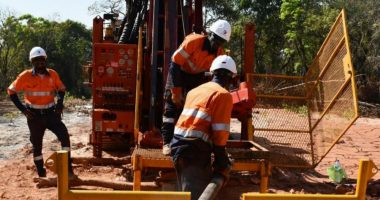WA1 Resources Ltd (ASX:WA1) has reported that according to recent metallurgical test work, a high-grade niobium concentrate with recoveries of up to 62 percent can be yielded from its Luni target – part of the company’s landmark West Arunta project in Western Australia.
And the market – pleased by the result from this mineralised carbonatite system-based project which has been described as ‘the first of its kind’ – reacted positively to the news, sending the company’s share price up 23.20 percent: sitting at $19.97 by 13:03 AEST.
WA1 carried out initial metallurgical work on sample material from a drillhole northeast of Luni, using a two-stage flotation process, producing an industry-comparable, high-grade concentrate which was also low in impurities.
An open cycle float test picked up concentrate results of 51 percent niobium pentoxide (Nb2O5) at 62 percent recovery (second cleaner), while open cycle concentrate (fourth cleaner) yielded 61 percent Nb2O5 at 52 percent recovery, and a locked cycle concentrate (fifth cleaner) was at 58 percent Nb2O5 at 53 percent recovery.
WA1 intends to continue testing to optimise the beneficiation stage, trying out other process steps used at existing niobium operations, before moving to variability testing across the Luni target area.
Managing director, Paul Savich said the results indicated that processing of this ore could be fairly straightforward.
“Our first beneficiation testwork program has produced high-grade niobium concentrates with low impurities and at industry-comparable recovery rates through a practical two stage
flotation regime,” he said.
“We consider this an excellent outcome towards unlocking the significant inherent strategic value of Luni.
“Flotation of niobium minerals is widely recognised as the key challenge to developing a
conventional process flowsheet for a niobium deposit: this is because flotation typically provides most of the upgrade from ore to concentrate and incurs a majority of the recovery losses.
“Our testwork is currently optimising this regime, with clear potential for improvement through the comminution, classification and flotation steps. Other beneficiation techniques such as gravity and magnetic separation are also being assessed.”









